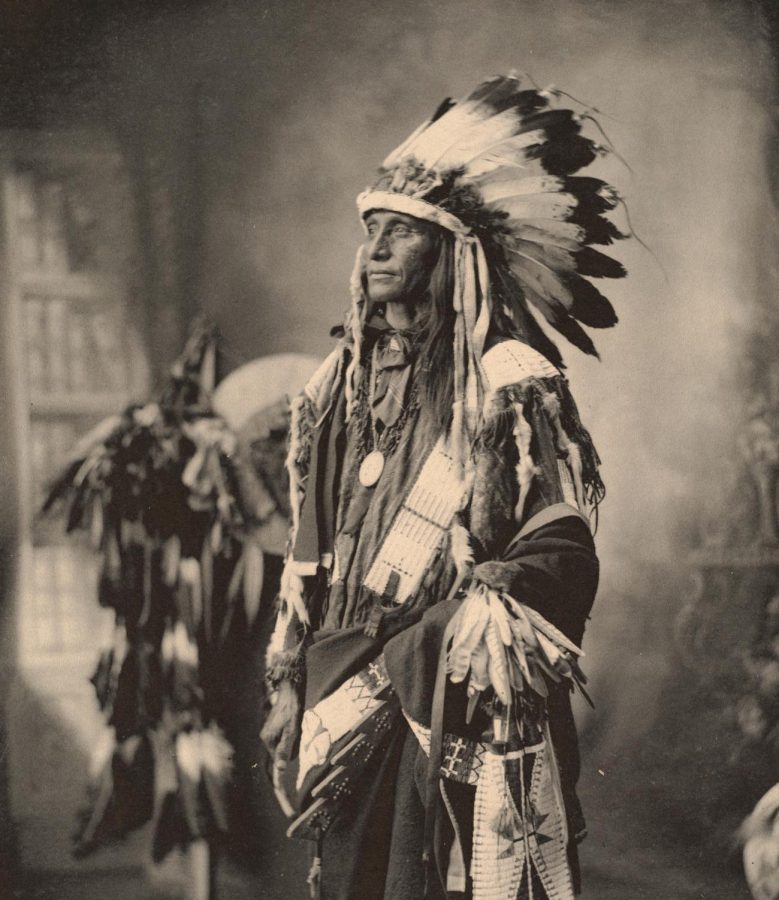Bucks hosted Gloria Lopez, Esq., former Fulbright Chair in Human Rights and Social Justice at the University of Ottawa, at a celebration honoring Native Americans during November’s Native American Heritage Month.
Bucks President Felicia Ganther greeted attendees, saying “We can come together, we can learn new things, we can expand our minds, and we can share the ties that bind us together as humans.”
The first Native American Secretary of the Interior, Deb Haaland, said via video “This month we honor the gifts of our ancestors by celebrating indigenous knowledge, traditions, language and culture… We Center our work on the voices of indigenous people, as we address the missing and murdered indigenous people’s crisis.”
US indigenous population has doubled to almost 10 million for the 2020 census; Twenty two percent live on reservations. Unemployment and those living below the poverty level are consistently nearly double that of all Americans even though the federal budget allocates billions for Native American programs. Despite education subsidies, only 14.5 percent graduate from college.
A 2015 National Congress of American Indians found that as much as 40 percent of sex trafficking victims identify as American Indian, Alaska Native, or First Nations (AIANFN) and indigenous women suffer more violence and are murdered at 10 times the national rate.
Chief Vincett Mann, Chief of the Bucks Lenape, reminded us via video that our Bucks Newtown campus is housed on what was Lenape/ Delaware Indian land beginning 12,000 to 15,000 years ago. The Lenape are indigenous, people who have historic ancestral and cultural ties to the land.
The Delaware river was the Lenape Indian lifeline providing transportation, water, and food, so some also call the Delaware the Lenape.
Native Americans developed three-sisters-farming: first planting corn, next beans to grow up the corn stalks and provide nitrogen, finally squash to cover the ground and prevent weeds. All work together for a balanced garden and diet. The Chief hopes that Point Breeze gardens in Bordentown will provide a foothold for Lenape people in the region.
Lopez, identifying herself as Mayan, says that “the indigenous people’s land is theirs. Laws and policies abrogate historical rights and create obstacles to rights of language, culture, mobility and education.”
She committed herself to indigenous people living “under borders” (her term for indigenous people whose land crosses borders) when she was mistaken for a Belizean Mayan trying to cross the border into Guatemala where only Guatemalan Mayans were allowed to work.
Many of the world’s 370 million indigenous people live “under borders,” crossing international borders to perform religious and work ceremonies as part of their daily life. Examples include the Tohono O’odham in Arizona, Mari in Russia, and the Sami in Norway.
The UN enacted its Declaration on the Rights of Indigenous People in 2007. The US has multiple treaties to protect indigenous people and allow access to their land before borders.
Lopez focuses on the Akwesasne whose reservation straddles the United States-Canadian border.
Though the seven roads and two waterways that cross the border are unmarked, individuals can be fined if they don’t check into the border station 25 minutes inside the Canadian border. Because the border runs through the reservation and even through some houses and buildings, checking into the station takes extra time and effort and may not be realistic.
Native Americans on reservations govern themselves and make their own passports, but their land is owned by the federal government. The complexity between federal, reservation, and international jurisdiction and laws, makes economic development, tracking people and crime, and traveling “below borders” much more difficult.
As Haaland points out, the problems of AIANFN are all of our problems because “Native American history is American history and it’s only by recognizing that history that we can build a future that is equitable and inclusive.”


